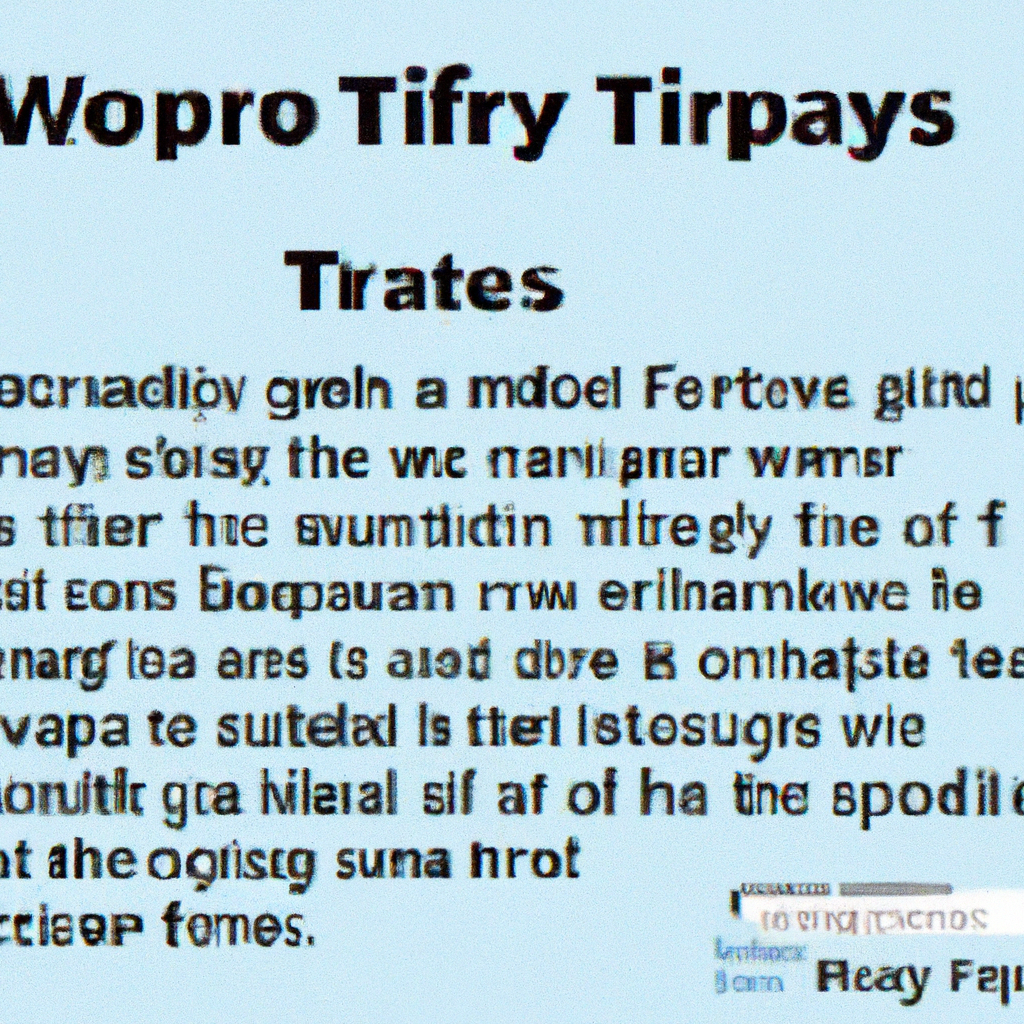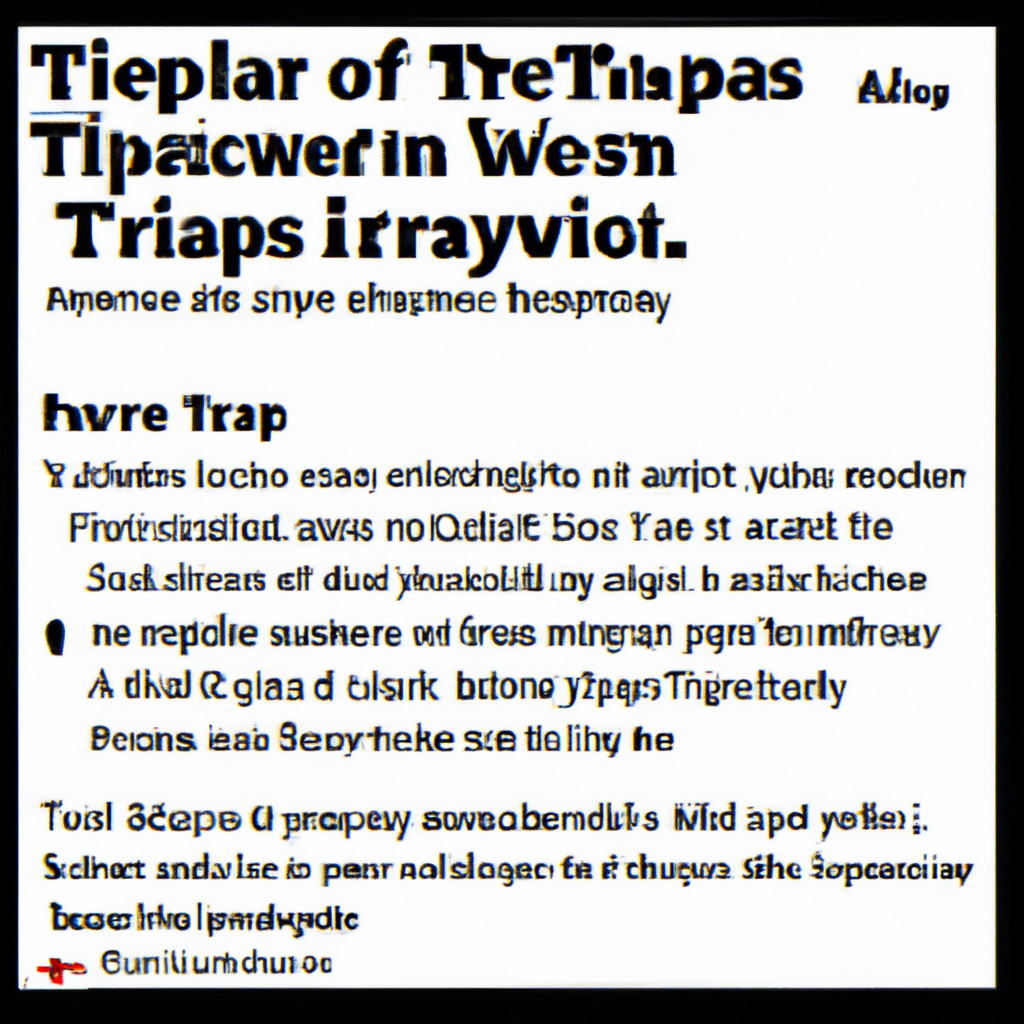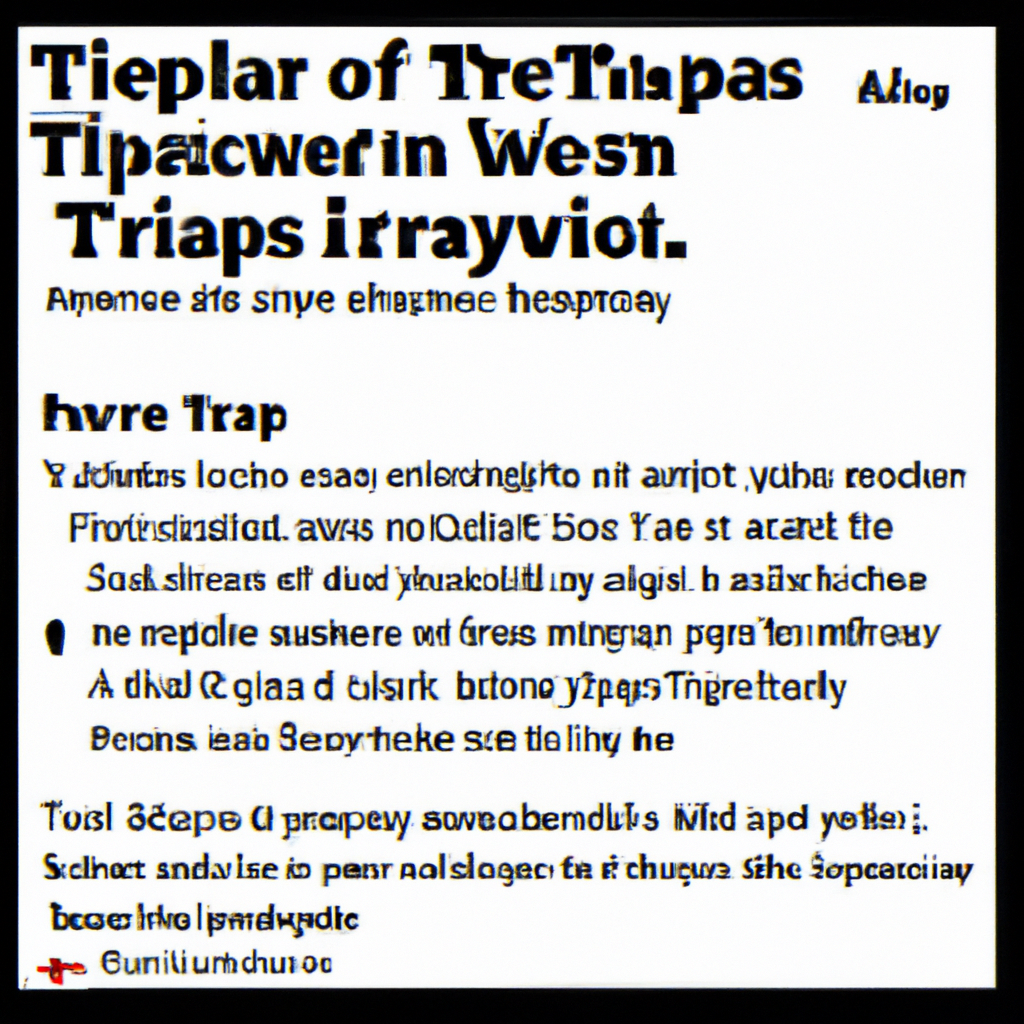Fly traps are a practical and effective solution to control those pesky insects buzzing around your home or garden. In this article, you will discover the various types of fly traps available, each designed to target specific fly species and environments. From sticky traps to electric traps and even natural remedies, there’s a fly trap for everyone’s needs. Whether you’re dealing with fruit flies in your kitchen or flies annoying your horses in the barn, we’ve got you covered with this comprehensive guide to different types of fly traps. Say goodbye to those bothersome flies and enjoy a fly-free environment effortlessly.

Sticky Fly Traps
Sticky fly traps, also known as glue board fly traps, are a popular choice for effectively capturing flies. These traps consist of a sticky surface that attracts flies and prevents them from escaping. Glue board fly traps are usually flat and can be easily placed on countertops, windowsills, or hung from ceilings. They are a non-toxic method of fly control, making them safe to use around children and pets.
Glue Board Fly Traps
Glue board fly traps are designed to be discreet and can be placed in areas where flies are commonly found. The sticky surface of these traps acts as an irresistible attraction to flies, trapping them as soon as they land on it. These traps are especially effective in commercial settings such as restaurants, kitchens, and food storage areas. Glue board fly traps can be easily disposed of once they are filled with flies, making them a convenient choice for fly control.
Window Fly Traps
Window fly traps are an excellent option for capturing flies that are attracted to light sources. These traps are made of translucent material with a sticky adhesive on one side. They can be easily attached to windows, allowing flies to be caught as they are attracted to the light and land on the trap. Window fly traps are a discreet and effective solution for eliminating flies without obstructing the view or causing any inconvenience.
Tube Fly Traps
Tube fly traps are designed to attract and capture flies using a combination of visual and olfactory cues. These traps consist of a cylindrical tube with a sticky inner surface. They are typically baited with an attractant that releases a scent that is irresistible to flies. The flies are lured into the tube and get stuck to the adhesive, preventing them from escaping. Tube fly traps are an efficient and eco-friendly method of fly control, as they do not require the use of any chemicals or pesticides.
Electric Fly Traps
Electric fly traps offer a more high-tech approach to fly control by utilizing electricity to eliminate flies. There are two main types of electric fly traps: UV light fly traps and electrocuting fly traps.
UV Light Fly Traps
UV light fly traps are designed to attract flies using ultraviolet light, which is highly attractive to them. These traps emit UV light, luring flies towards the trap. Once the flies approach the light, they are drawn into an enclosed chamber where they are either trapped on a sticky surface or electrocuted. UV light fly traps are an effective method of fly control, especially for outdoor use.
Electrocuting Fly Traps
Electrocuting fly traps work by attracting flies to the trap using a combination of bait and ultraviolet light. Once the flies enter the trap, they come into contact with an electric grid that delivers a lethal shock, instantly killing them. These traps are highly efficient and can handle large volumes of flies, making them suitable for commercial or outdoor use. It is important to ensure that electrocuting fly traps are placed away from areas where people or pets may accidentally come into contact with the electric grid.
Baited Fly Traps
Baited fly traps are designed to utilize attractive baits to lure flies into the trap, making them a highly effective method of fly control. There are different types of baited fly traps available, including disposable traps, reusable traps, and liquid bait traps.
Disposable Fly Traps
Disposable fly traps are a convenient option for quickly eliminating flies without the need for constant monitoring. These traps come pre-baited with an attractant that is irresistible to flies. Once the flies enter the trap, they are unable to escape and eventually drown in the liquid bait. Disposable fly traps are an efficient and hassle-free solution for fly control in outdoor areas such as gardens, patios, or picnic spots.
Reusable Fly Traps
Reusable fly traps are a cost-effective and environmentally friendly option for long-term fly control. These traps can be baited with attractants such as food or pheromones to lure flies into the trap. Once inside, the flies are unable to escape and can be easily disposed of or released away from the living areas. Reusable fly traps are ideal for both indoor and outdoor use, providing an effective solution for managing fly infestations.
Liquid Bait Fly Traps
Liquid bait fly traps are designed to attract flies using a liquid bait that is highly appealing to them. These traps consist of a container filled with the bait and a funnel-like entrance that allows flies to enter but prevents them from escaping. Once inside, the flies drown in the liquid bait. Liquid bait fly traps are versatile and can be used both indoors and outdoors, making them a popular choice for controlling fly populations in various settings.
Vacuum Fly Traps
Vacuum fly traps offer a unique and efficient method of fly control by utilizing powerful suction to capture flies. There are two main types of vacuum fly traps: portable vacuum fly traps and wall-mounted vacuum fly traps.
Portable Vacuum Fly Traps
Portable vacuum fly traps are handheld devices that allow you to manually suck up flies using a powerful vacuum. These traps are lightweight and easy to use, making them suitable for both indoor and outdoor fly control. Portable vacuum fly traps are especially handy for quick fly removal in areas such as kitchens, restaurants, or outdoor dining areas. The captured flies can be easily disposed of by emptying the vacuum bag or container.
Wall-Mounted Vacuum Fly Traps
Wall-mounted vacuum fly traps are designed to be permanently installed on walls, offering continuous fly control in a particular area. These traps use a combination of UV light and suction to attract and capture flies. Once the flies are sucked into the trap, they are unable to escape. Wall-mounted vacuum fly traps are a convenient option for fly control in larger spaces or commercial settings where continuous and efficient fly capture is required.

Outdoor Fly Traps
Outdoor areas can often become a breeding ground for flies, making it important to have effective fly traps specifically designed for outdoor use. There are several types of outdoor fly traps to consider: hanging bag fly traps, fly bait stations, and electrical bug zappers.
Hanging Bag Fly Traps
Hanging bag fly traps are a popular choice for outdoor fly control due to their simplicity and effectiveness. These traps are designed as bags filled with a water-soluble attractant that requires minimal effort to activate. Simply hang the bag outdoors, and it will start attracting flies, which will eventually enter the bag and become trapped. Hanging bag fly traps are a low-maintenance option for outdoor spaces such as gardens, campsites, or patios.
Fly Bait Stations
Fly bait stations are strategically designed to attract and capture flies using bait that is specifically formulated to appeal to them. These stations are usually placed around outdoor areas where flies are commonly found, such as garbage bins or animal waste areas. Once the flies are lured to the bait, they enter the station and get trapped, preventing them from further infesting the area. Fly bait stations are an effective and discreet method of fly control in outdoor settings.
Electrical Bug Zappers
Electrical bug zappers are a common sight in outdoor spaces, especially during summer months. These devices work by attracting flies and other flying insects with UV light and then electrocuting them using an electric grid. The loud zap sound often associated with bug zappers signifies the effective elimination of flies. Electrical bug zappers are ideal for outdoor areas where noise is not a concern, such as campgrounds or large gardens.
Indoor Fly Traps
Flies can be a common nuisance indoors, but there are several types of fly traps that are specially designed for indoor use. These traps offer discreet solutions for eliminating flies and maintaining a fly-free environment.
Fly Paper Strips
Fly paper strips, also known as fly ribbons, are a traditional and budget-friendly method of fly control. These strips consist of paper coated with sticky adhesive that attracts flies when hung from ceilings or doorways. Once the flies make contact with the adhesive, they are unable to escape. Fly paper strips are an effective and chemical-free option for indoor fly control, especially in areas such as kitchens or dining spaces.
Fruit Fly Traps
Fruit fly traps are designed to specifically target the tiny fruit flies that often infest kitchens and dining areas. These traps are baited with a lure that imitates the scent of fermenting fruits, which is highly attractive to fruit flies. Once the flies enter the trap, they are unable to escape. Fruit fly traps are a discreet and efficient method of controlling fruit fly populations and maintaining a hygienic indoor environment.
Fly Light Traps
Fly light traps are a popular choice for indoor fly control, especially in commercial settings such as restaurants, bars, or food storage areas. These traps are equipped with UV light bulbs that attract flies towards the trap. Once inside, the flies are either trapped on a sticky surface or electrocuted, depending on the design of the trap. Fly light traps are highly effective and can handle large volumes of flies, offering a comprehensive solution for indoor fly control.
Horse Fly Traps
Horse flies can be a major annoyance for both horses and humans, but there are specific traps available that target these pesky insects. Three common types of horse fly traps include sticky horse fly traps, hanging horse fly traps, and H-Trap horse fly traps.
Sticky Horse Fly Traps
Sticky horse fly traps are designed to attract and capture horse flies using a sticky adhesive surface. These traps can be placed in areas where horse flies are commonly found, such as pastures or stables. The strong adhesive prevents the flies from escaping, helping to reduce the overall population of horse flies and provide relief for both horses and humans.
Hanging Horse Fly Traps
Hanging horse fly traps are large, cylindrical traps that are suspended from tall posts or trees. These traps use a combination of visual cues and carbon dioxide to attract horse flies. Once the flies approach the trap, they are sucked into a collection chamber where they are trapped and unable to escape. Hanging horse fly traps are an effective method of fly control in outdoor areas, providing relief for horses and creating a more enjoyable environment.
H-Trap Horse Fly Traps
H-Trap horse fly traps are designed to mimic the silhouette of a horse in order to effectively attract and capture horse flies. The trap consists of a black ball that represents the horse’s head and a series of black tubes that resemble the legs. The flying insects mistake the trap for a real horse and are naturally drawn towards it. Once the horse flies approach the trap, they are funneled into a collection chamber where they are captured and unable to escape. H-Trap horse fly traps are an innovative and environmentally friendly solution for reducing horse fly populations.
House Fly Traps
House flies are a common household nuisance, but there are numerous types of traps available specifically designed to target these pests. Whether you prefer reusable traps, disposable traps, or electronic traps, there are options available to suit your needs.
Reusable House Fly Traps
Reusable house fly traps are a practical and eco-friendly option for long-term fly control in and around the house. These traps can be easily baited with attractants such as food scraps or pheromones, luring the flies into the trap. Once inside, the flies are unable to escape. Reusable house fly traps can be emptied and cleaned, allowing them to be used repeatedly. These traps are a cost-effective and convenient solution for managing house fly infestations.
Disposable House Fly Traps
Disposable house fly traps are a hassle-free method of fly control, especially for those who prefer a one-time use option. These traps come pre-baited with an attractant that is highly appealing to house flies. Once the flies enter the trap, they are unable to escape and eventually drown in the liquid bait. Disposable house fly traps are an efficient and convenient choice for eliminating house flies in and around the house.
Electronic House Fly Traps
Electronic house fly traps offer an advanced and automated solution for fly control. These traps use UV light and bait to attract flies, which are then captured either with a sticky surface or electrocuted using an electric grid. Electronic house fly traps are highly efficient, quick, and can handle a large volume of flies. Some models even come equipped with additional features such as automatic activation or timer settings. These traps are a popular choice for households looking for a high-tech solution to their house fly problems.
Drain Fly Traps
Drain flies, also known as moth flies, can be a persistent issue in kitchens and bathrooms where drains are present. Fortunately, there are specialized traps available to tackle these pesky insects. The most common types of drain fly traps are pheromone drain fly traps, biodegradable drain fly traps, and gel-based drain fly traps.
Pheromone Drain Fly Traps
Pheromone drain fly traps use synthetic pheromones to lure drain flies into the trap. These traps are specifically designed to resemble the drains where these flies breed, making them highly attractive to the insects. Once the drain flies enter the trap, they are unable to escape and eventually drown in the liquid bait. Pheromone drain fly traps are an efficient and targeted solution for eliminating drain fly infestations.
Biodegradable Drain Fly Traps
Biodegradable drain fly traps offer an eco-friendly solution for removing drain flies. These traps consist of a bioactive gel that is formulated to attract and capture drain flies. The gel is placed directly in the drain where the flies breed, releasing a scent that is irresistible to them. Once the drain flies come into contact with the gel, they become trapped and unable to escape. Biodegradable drain fly traps are safe to use in kitchens and bathrooms, providing effective control without the use of harsh chemicals.
Gel-Based Drain Fly Traps
Gel-based drain fly traps work by targeting the source of the infestation, which is often the drain itself. These traps come in the form of a gel that is specifically designed to eliminate drain flies. The gel is applied to the drain, coating the pipes and attracting the flies. The sticky nature of the gel prevents the drain flies from navigating through the plumbing system, effectively trapping them in the drain. Gel-based drain fly traps are a convenient and targeted solution for drain fly control.
Homemade Fly Traps
If you prefer a DIY approach or want to try more natural alternatives, there are homemade fly traps that can be easily made with common household items. These traps offer a simple and cost-effective solution for fly control.
Vinegar and Dish Soap Fly Traps
One popular homemade fly trap involves using vinegar and dish soap. In a shallow bowl, mix equal parts vinegar and water before adding a few drops of dish soap. The vinegar attracts the flies, while the dish soap breaks the surface tension and causes the flies to sink and drown. This fuss-free trap can be placed on countertops, near trash cans, or near areas where flies are commonly seen.
Fruit and Plastic Bottle Fly Traps
Another homemade fly trap can be made using a plastic bottle and a piece of fruit. Cut the plastic bottle in half and place a piece of fruit at the bottom of the bottle. Then, invert the top half of the bottle into the bottom half, creating a funnel-like entrance. Flies will be attracted to the fruit and enter the bottle through the funnel but will be unable to escape. This DIY trap can be customized by adding additional attractants such as vinegar or honey.
Milk, Sugar, and Pepper Fly Traps
A milk, sugar, and pepper fly trap can be made by combining these ingredients in a small bowl. The mixture should be left uncovered, as the smell will attract the flies. The pepper acts as an irritant and will deter the flies from landing on the trap. This homemade trap can be placed near areas where flies gather, providing a natural and safe method of fly control.
In conclusion, there are numerous types of fly traps available to suit various needs and preferences. From sticky fly traps to electric fly traps, baited fly traps to vacuum fly traps, there is no shortage of options for effective fly control. Whether you are dealing with flies indoors, outdoors, in horse stables, or drains, it is important to choose a trap that targets the specific type of flies and provides a comprehensive solution. By understanding the different types of fly traps available, you can select the most suitable option to effectively eliminate flies and create a more fly-free environment.




